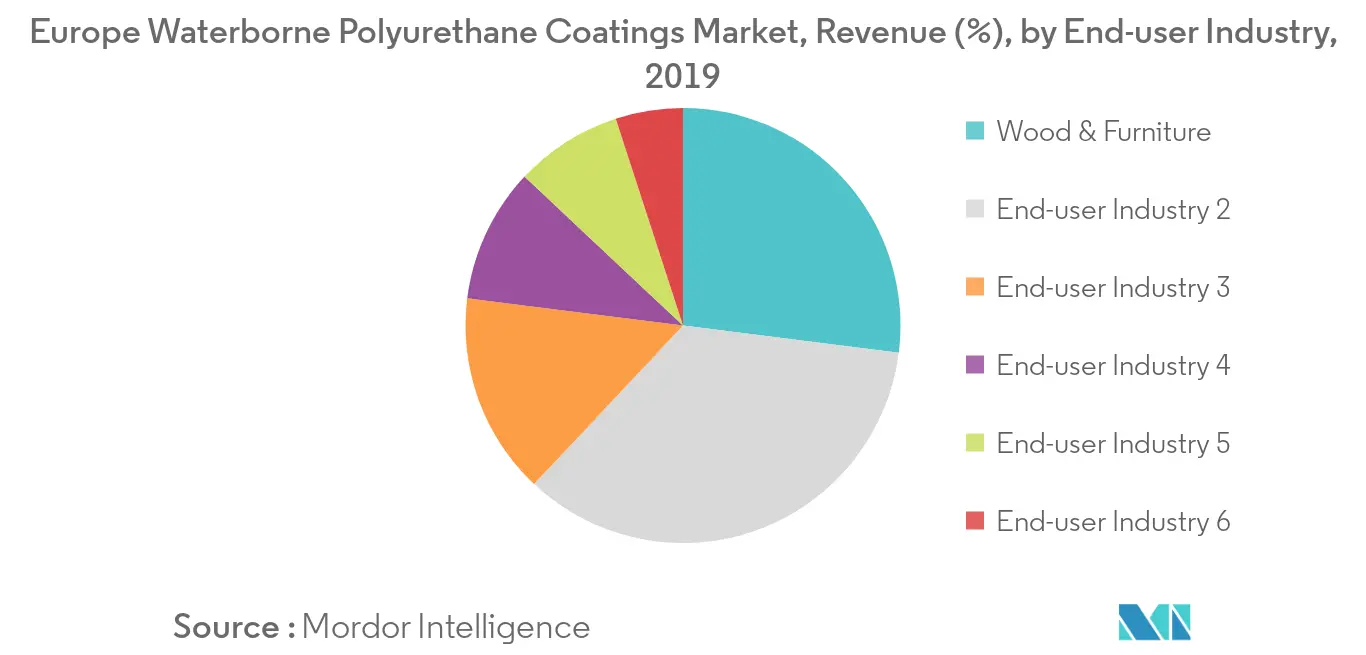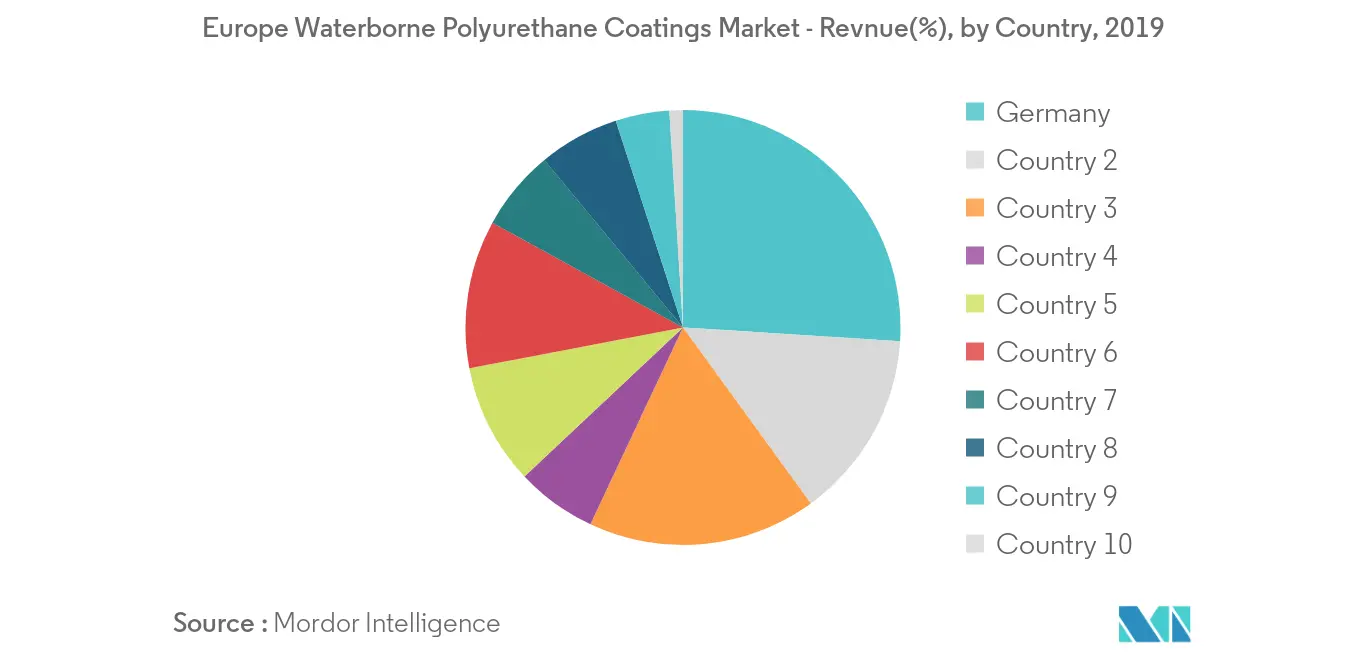Market Trends of Europe Waterborne Polyurethane Coatings Industry
This section covers the major market trends shaping the Europe Waterborne Polyurethane Coatings Market according to our research experts:
Consistent Growth of European Wood Furniture Industry
- Waterborne polyurethane (PU) coatings are widely used on wood and furniture. Unlike solvent-based coatings, waterborne polyurethane wood coatings maintain a high degree of elasticity over time, which allows the paint film to follow the movements of the wood without being damaged.
- In terms of coating of furniture and furnishing components, the aesthetic result is fundamental. Coating wood with waterborne PU resins helps in attaining finishes that are indistinguishable from those obtained with solvent-based products. This is primarily due to their appearance and softness.
- Moreover, over the past few years, there is rising environmental awareness and people are highly attentive regarding the health of operators and end customers. Furniture with an eco-compatible finish is gaining prominence, and generates the lowest possible emission of solvents, both, during coating and during the slow final drying phase.
- Hence, waterborne PU coatings are mostly recommended. Moreover, they cater to various applications where surfaces are subject to high wear-and-tear, as well as in scenarios where excellent chemical/physical resistance is required. They are primarily used in offices and kitchens, exterior frames and shutters, wooden houses and facings, decking and garden furniture, interior furnishings, marine interiors, traditional wooden flooring, pre-finished wooden flooring, RCC and metallic and nonmetallic surfaces, and water proofing on PU foam.
- Furthermore, in the furniture industry, concepts related to the interiors of homes, offices, and flats are changing continuously. This is driving innovation and development, primarily in terms of designs, size, and colors. This is expected to augment the production volume of furniture.
- The EU wood furniture market was valued at about EUR 41.4 billion in 2018, an increase of 0.8% when compared to the value registered in 2017. The growth trend, although slow, has been consistent, at about 1%, since the past five years. In 2018, Poland, the United Kingdom, Lithuania, and the Netherlands witnessed significant gains from the wood furniture industry, which were offset by the declining wood furniture production in France, Romania, and Sweden. Production in Italy and Germany, the two largest wood furniture manufacturing countries in the EU region, was flat in 2018.
- All the afore-mentioned factors are instrumental in the growth of the segment studied over the forecast period.

Germany to Dominate the Market
- The German economy is the largest in Europe, and fifth largest in the world. The economic growth of the country is affected by various factors, such as trade tensions leading to reduced exports and tariff disputes triggered by the US government. Among major commodity groups, the largest gains occurred in sales of motor vehicles, machinery and equipment, electric equipment and computers, electronics, and optical products. In 2019, the German economy grew by about 0.6%, which was its weakest growth rate in the last six years.
- Manufacturing is the most important sector in Germany, and accounts for about 80% of the total industrial production. The largest segments related to manufacturing include machinery and equipment, automotive, basic metals and fabricated metal products, computers, and electronic and electrical equipment.
- In 2018, the German automotive production recorded a slump of about 9.3%. However, in Europe, Germany accounted for about 30% of the total passenger car manufacturing capacity. 21 of the world's top 100 automotive suppliers are German companies. The automotive production in the country has been declining, since the past few years, primarily due to the high cost and shifting of production to countries, like China. Moreover, sales are expected to increase at a slow pace. However, there is still significant demand from the automotive aftermarket, which is expected to contribute to the consumption of coatings during the forecast period.
- Also, the German transportation sector is witnessing growth which is expected to further boost the demand of waterborne polyurethane coatings. The government has approved the EUR 10 billion project, German Unity Transport Project 8 (VDE 8) in 2016, which led to the improvement of the transport connection between East and West, and between North and South Germany.
- Furthermore, the increasing demand for frigates in the country is expected to boost the construction of surface ships in the local yards of the country. This is likely to drive the demand for marine coatings market in the country. Waterborne structural coatings are slowly being adapted by shipbuilders, taking into consideration the environmental regulations.
- Some of the major manufacturers in the country include BASF SE, Akzo Nobel N.V., and PPG Industries Inc.
- The aforementioned factors, coupled with government support, are contributing to the increasing demand for waterborne polyurethane coatings in Germany, during the forecast period.

